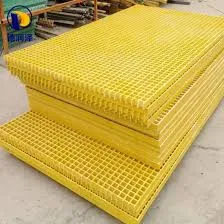
-
 Afrikaans
Afrikaans -
 Albanian
Albanian -
 Amharic
Amharic -
 Arabic
Arabic -
 Armenian
Armenian -
 Azerbaijani
Azerbaijani -
 Basque
Basque -
 Belarusian
Belarusian -
 Bengali
Bengali -
 Bosnian
Bosnian -
 Bulgarian
Bulgarian -
 Catalan
Catalan -
 Cebuano
Cebuano -
 China
China -
 China (Taiwan)
China (Taiwan) -
 Corsican
Corsican -
 Croatian
Croatian -
 Czech
Czech -
 Danish
Danish -
 Dutch
Dutch -
 English
English -
 Esperanto
Esperanto -
 Estonian
Estonian -
 Finnish
Finnish -
 French
French -
 Frisian
Frisian -
 Galician
Galician -
 Georgian
Georgian -
 German
German -
 Greek
Greek -
 Gujarati
Gujarati -
 Haitian Creole
Haitian Creole -
 hausa
hausa -
 hawaiian
hawaiian -
 Hebrew
Hebrew -
 Hindi
Hindi -
 Miao
Miao -
 Hungarian
Hungarian -
 Icelandic
Icelandic -
 igbo
igbo -
 Indonesian
Indonesian -
 irish
irish -
 Italian
Italian -
 Japanese
Japanese -
 Javanese
Javanese -
 Kannada
Kannada -
 kazakh
kazakh -
 Khmer
Khmer -
 Rwandese
Rwandese -
 Korean
Korean -
 Kurdish
Kurdish -
 Kyrgyz
Kyrgyz -
 Lao
Lao -
 Latin
Latin -
 Latvian
Latvian -
 Lithuanian
Lithuanian -
 Luxembourgish
Luxembourgish -
 Macedonian
Macedonian -
 Malgashi
Malgashi -
 Malay
Malay -
 Malayalam
Malayalam -
 Maltese
Maltese -
 Maori
Maori -
 Marathi
Marathi -
 Mongolian
Mongolian -
 Myanmar
Myanmar -
 Nepali
Nepali -
 Norwegian
Norwegian -
 Norwegian
Norwegian -
 Occitan
Occitan -
 Pashto
Pashto -
 Persian
Persian -
 Polish
Polish -
 Portuguese
Portuguese -
 Punjabi
Punjabi -
 Romanian
Romanian -
 Russian
Russian -
 Samoan
Samoan -
 Scottish Gaelic
Scottish Gaelic -
 Serbian
Serbian -
 Sesotho
Sesotho -
 Shona
Shona -
 Sindhi
Sindhi -
 Sinhala
Sinhala -
 Slovak
Slovak -
 Slovenian
Slovenian -
 Somali
Somali -
 Spanish
Spanish -
 Sundanese
Sundanese -
 Swahili
Swahili -
 Swedish
Swedish -
 Tagalog
Tagalog -
 Tajik
Tajik -
 Tamil
Tamil -
 Tatar
Tatar -
 Telugu
Telugu -
 Thai
Thai -
 Turkish
Turkish -
 Turkmen
Turkmen -
 Ukrainian
Ukrainian -
 Urdu
Urdu -
 Uighur
Uighur -
 Uzbek
Uzbek -
 Vietnamese
Vietnamese -
 Welsh
Welsh -
 Bantu
Bantu -
 Yiddish
Yiddish -
 Yoruba
Yoruba -
 Zulu
Zulu
grp duct
Understanding GRP Ducts Advantages and Applications
Glass Reinforced Plastic (GRP) ducts represent a significant advancement in ductwork technology, providing a range of benefits over traditional materials such as metal and concrete. Constructed from fibreglass-reinforced resin, GRP ducts are known for their durability, lightweight nature, and resistance to corrosion, making them ideal for various industrial and commercial applications.
.
Corrosion resistance is another key feature of GRP ducts. Traditional duct materials often succumb to rust and degradation when exposed to moist or chemically aggressive environments. GRP, on the other hand, withstands harsh conditions without deteriorating, making it ideal for applications in wastewater treatment plants, chemical processing facilities, and marine environments. This resistance ensures longevity and lowers maintenance costs, providing a cost-effective long-term solution for many industries.
grp duct

Additionally, GRP ducts offer excellent thermal and acoustic insulation properties. They can significantly reduce energy loss in HVAC systems, improving overall energy efficiency. This feature is particularly valuable in climate-controlled environments, where maintaining stable temperatures can be critical. Moreover, the sound-dampening qualities of GRP ducts help minimize noise pollution, contributing to a more comfortable workspace or living environment.
The versatility of GRP ducts allows them to be tailored for various applications. They can be manufactured in different shapes and sizes to meet specific project requirements, and advanced manufacturing technologies enable the production of customized solutions. Moreover, the aesthetic flexibility of GRP allows it to be easily integrated into different architectural designs without compromising performance.
However, it is essential to consider factors such as material compatibility and installation practices when opting for GRP ducts. Proper installation by trained professionals is crucial to ensure optimal performance and longevity.
In conclusion, GRP ducts offer a blend of durability, lightweight construction, corrosion resistance, and energy efficiency, making them a highly advantageous choice for a variety of industrial and commercial applications. As industries continue to seek innovative and sustainable solutions, the adoption of GRP duct technology will likely grow, paving the way for more efficient operations and reduced environmental impact.









